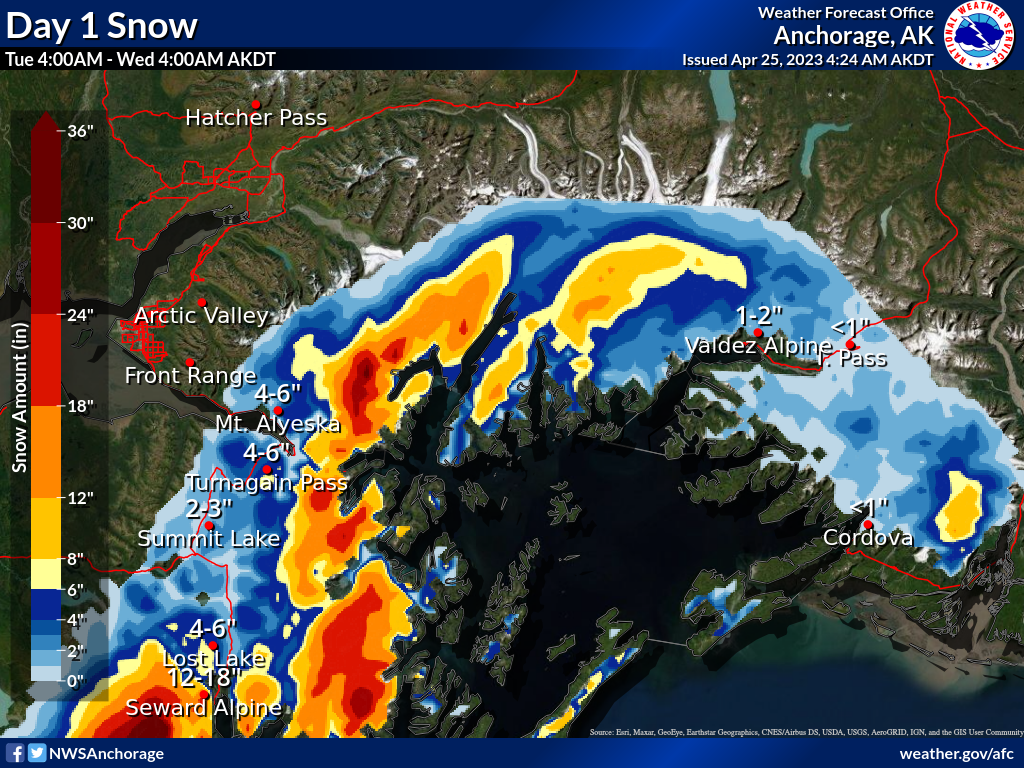Turnagain Pass
|
|
The avalanche danger is expected to rise to CONSIDERABLE above 2500′ as strong winds and sustained snowfall pick up this afternoon. Human triggered avalanches a foot deep or deeper will become likely, with natural avalanches possible. The most dangerous conditions will be found on wind-loaded slopes. Be on the lookout for increasing danger today through tomorrow, and avoid steep slopes as the weather gets more intense. The danger will be MODERATE below 2500′, where winds and precipitation will be less intense, but human-triggered avalanches failing in the new snow will still be possible.
PORTAGE/PLACER: These areas are expected to see 12-18″ snow during this round of precipitation. This will make for larger avalanches that could impact popular hiking trails at lower elevations.
*WEDNESDAY AVALANCHE OUTLOOK: This round of active weather is expected to continue through tonight, and will make for dangerous avalanche conditions into tomorrow. We will issue our next forecast Thursday, April 26.
Chugach State Park: We’ve received multiple reports of a wet snowpack in the CSP, that may be primed for a big wet slab avalanche cycle. The exact timing for this type of avalanche is hard to predict, but signs are pointing towards increased likelihood for wet slab activity.
End of Season Operations: We will be issuing forecasts 4 days/week (Tuesday, Thursday, Saturday, Sunday) until April 30th. If conditions warrant, updates will be posted in early May.



